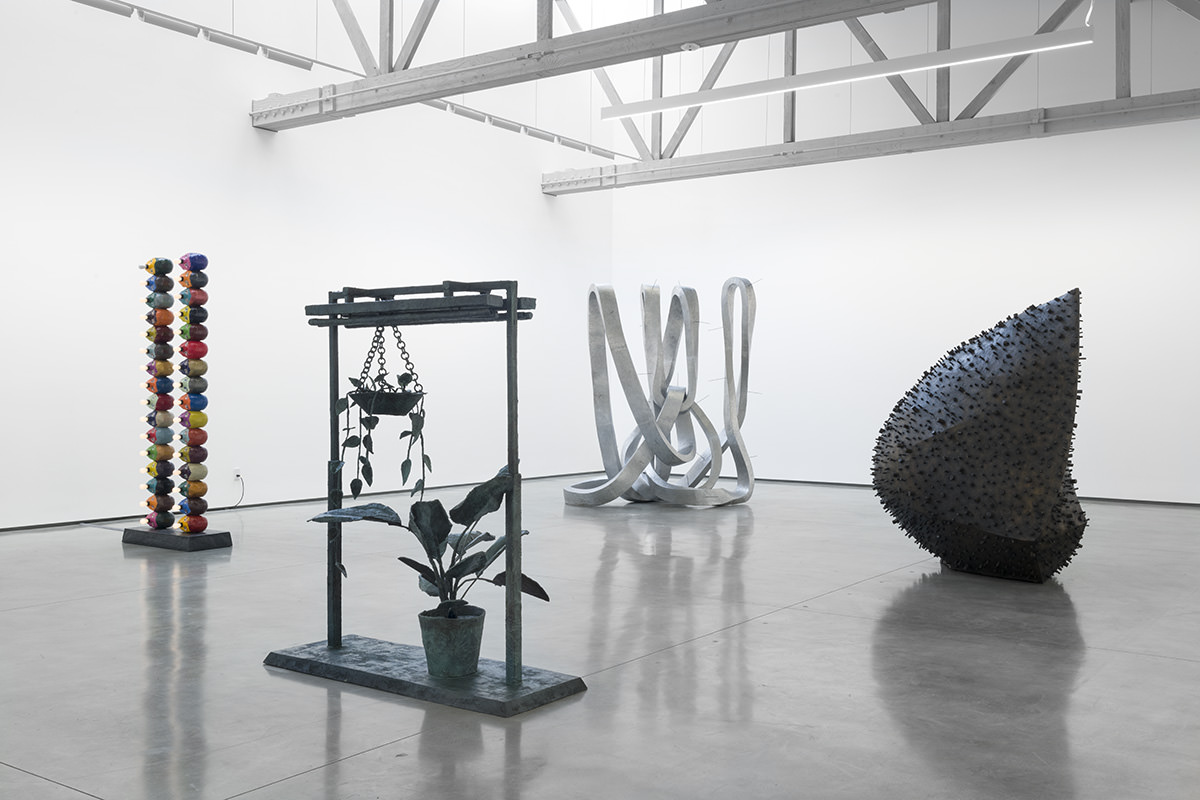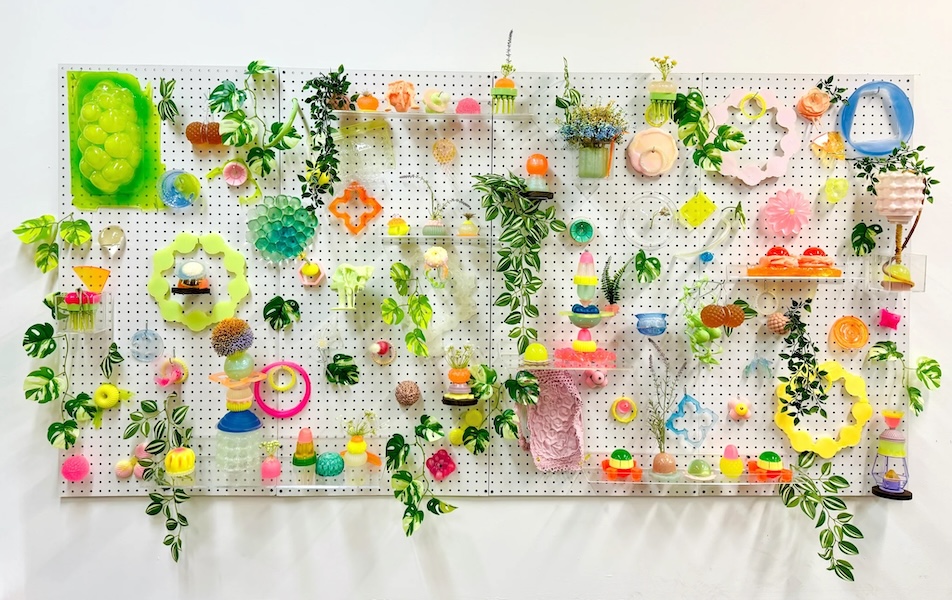Currently on view at David Kordansky Gallery is a solo exhibition of work by the Los Angeles–based artist Evan Holloway. The show includes a good deal of outdoor sculpture—large-scale pieces created in metal—as well as a new series of polychromatic head towers, incense holders, and more.
Whitewaller asked Holloway about the sculptures included in the exhibition. He answered our questions while he was sitting in his van outside the foundry waiting to approve a surface finishing, and he learned that his choice to make outdoor pieces was a reaction to issues of space, storage, and resources.
WHITEWALLER: What was the starting point for your current show at David Kordansky?
EVAN HOLLOWAY: Well, as much as I’d like to say there was a clear moment of conception for this particular show, it really feels like this is a significant shift in something that started about 33 years ago, when I decided to devote myself to making art. These works come from a foundation built over years and are the first opportunities to explore scale, durability, and a significant amount of resources in service of my larger personal mission—which I state to myself as “(try to) make good sculpture.”
WW: The show focuses on outdoor sculptures. What interests you in creating outdoor work?
EH: My work operates in space—fundamentally, this is where I do what I do—and outdoor space is much more plentiful than indoor space. Right now, indoor space is starting to look like a less sustainable place to present sculpture. In the 1960s, ’70s, and ’80s, it was much less expensive to maintain a large, clean, and almost entirely empty room. Today, most art world presentations are still defaulting to this even though the real estate market conditions around that kind of space have changed. It’s one of the ways contemporary art is evolving into its own form of exotic ritualistic presentation.
Making a work that is a single thing, that can be exhibited and/or stored outside, demands a greater amount of resources in the beginning when it’s being made—but is much less demanding in the long-term. My goal with these works is to make things that can hold their own without demanding too many resources in the future.
This also presents certain challenges. The work needs to be larger to be visible in the landscape, and it needs to be able to tolerate sun and weather. That is why the works I’m presenting are all made of cast metals—because this is a tried-and-true method of making durable, large works.
WW: You’ll be showing a new series of endless columns featuring polychromatic heads. Can you tell us about creating those towers?
EH: These have evolved from some very primitive papier-mâché heads I made over a plaster cast of my own head. Now, they are made in aluminum. At the time, I thought their flagrant stupidity was disarming. Having studied the pieces for a while as they developed, I’m still in many ways confused by them—they came about intuitively, so I’m not fully conscious of all they contain. They are stupid because they are a low, clowny, “made-you-look” sort of thing with flashing lightbulbs stuck in their noses. They are also vaguely gruesome because they are severed heads. So, stupid and gruesome and fun to look at.
I find that I easily project moods into each head, and meanings that are as confusing and unclear as when I consider any group of humans. They seem to be working in a kind of order when the lights are moving but to an uncertain end. There’s a lot of discomfort and pleasure in them, and it gives me an excuse to use color like a painter.
WW: Can you describe for us your studio space? Walk us through a typical day in your studio.
EH: My studio is in a 1950s industrial park in a still-ungentrified part of L.A. It is a set of interconnected small spaces. I use different spaces for different jobs. My wife, Karin Gulbran, also has her studio and kilns in the same complex.
The last few weeks, in this phase of production for the show, a typical day means getting up at 5:00 a.m. to leave the house at 6:00 a.m. to get to the foundry by 7:00 a.m., when they start their day, so I can have as much time as possible in their shop. Then, while I’m there, I might be dealing with some other stuff using my phone—like checking in with David Kordansky Gallery or Karin or the studio assistants.
Most other times, if I’m here at the foundry, I’m much more hands-on. If it goes well, I’ll leave early enough to get back to my studio while the assistants are still there and we can review what they are working on. After everyone leaves at 5:00 p.m., I’ll meditate, then drink a beer and look over the stuff in the studio and think about it, work on new ideas, and then go home to try to be in bed by 10:00 p.m. Actually, it’s a great life.










